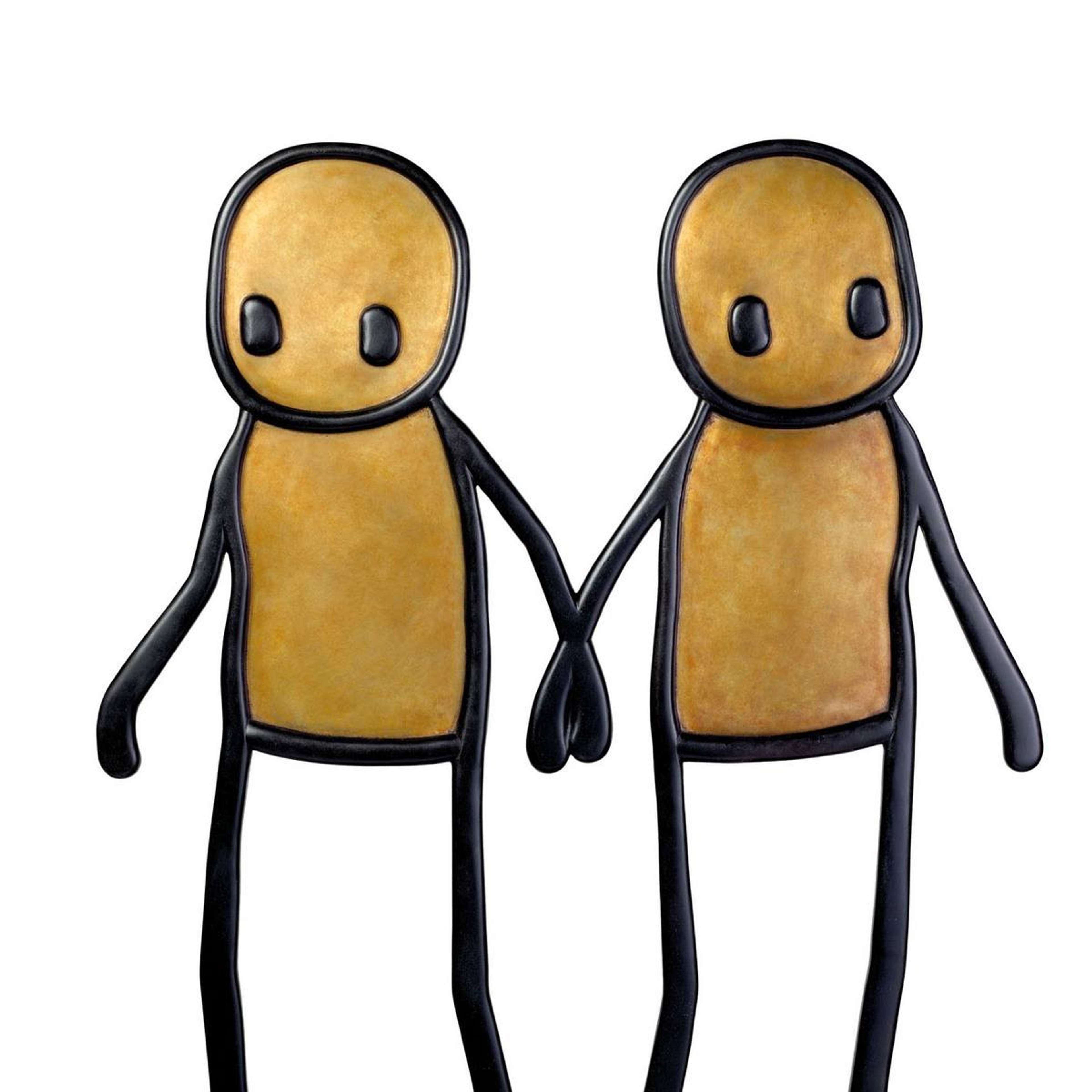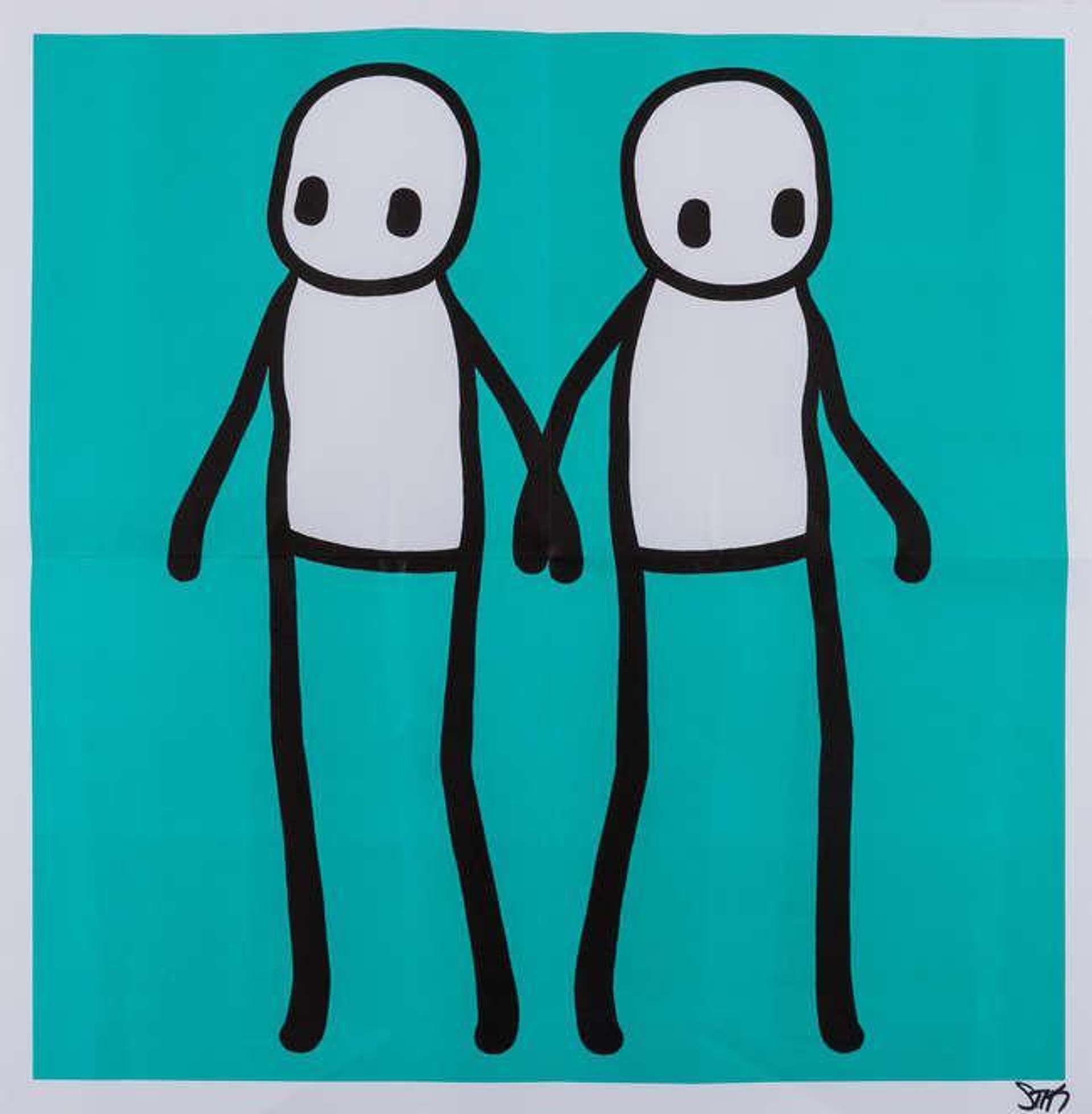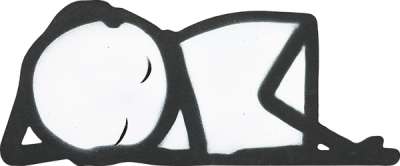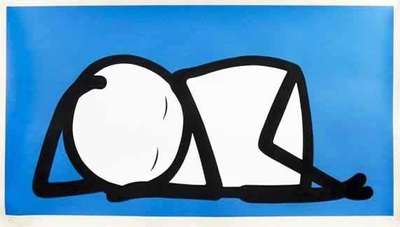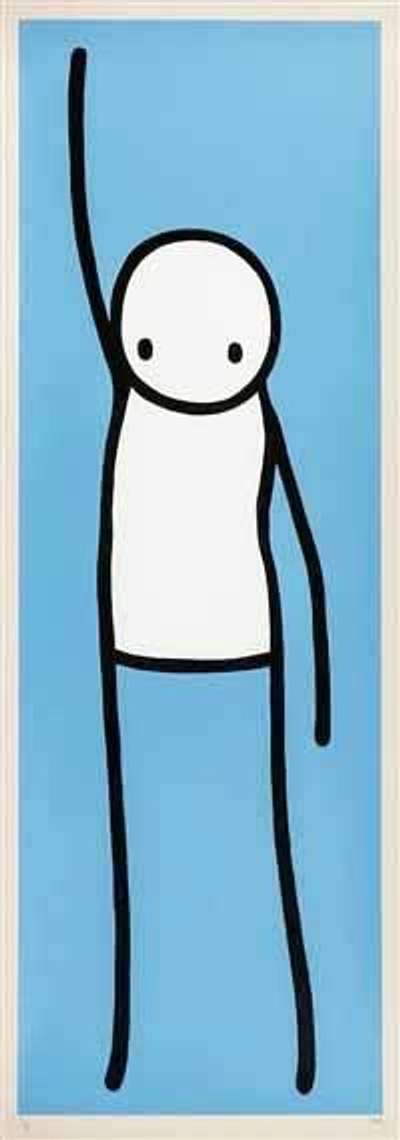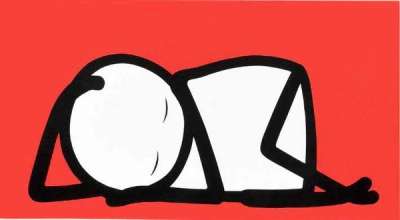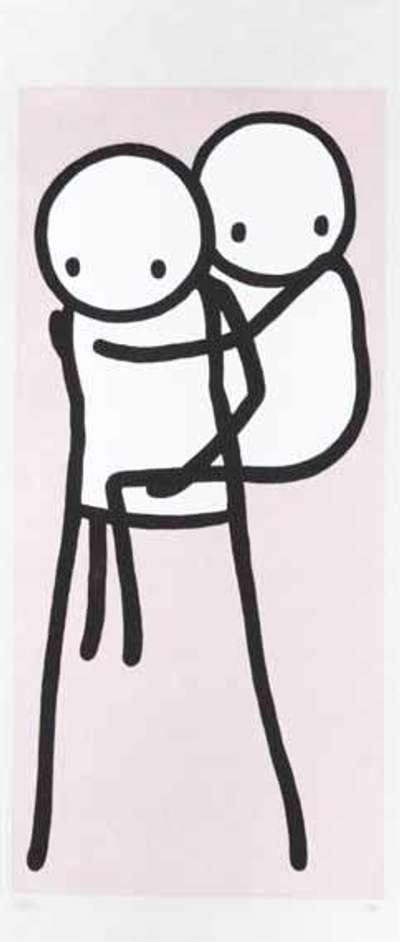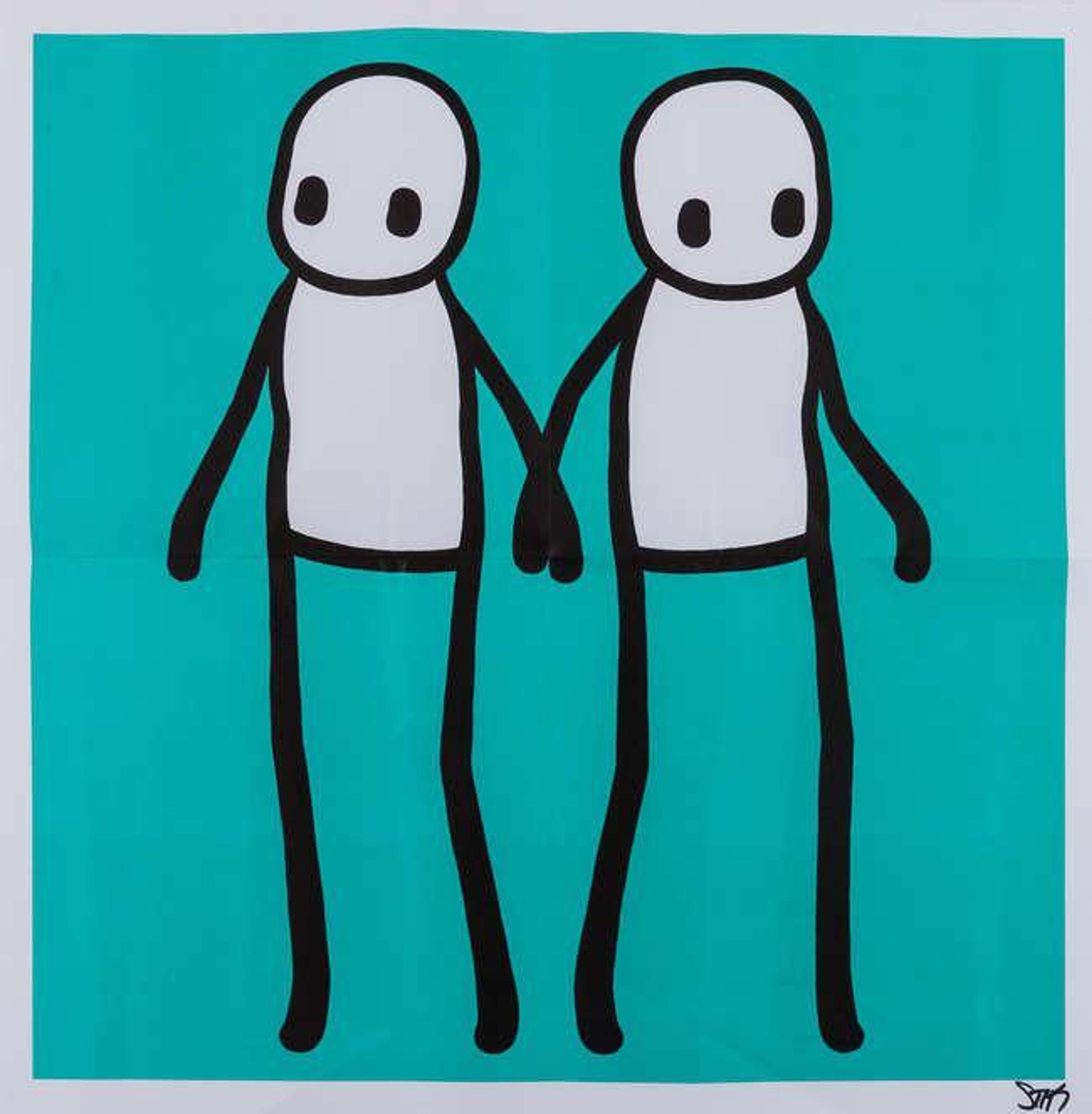 Sleeping Baby (red) © STIK 2015
Sleeping Baby (red) © STIK 2015
Interested in buying or selling
Stik?

Stik
54 works
Most of STIK’s art belongs on the street but he has also released prints and multiples for sale, often for charitable causes. Many of these are now available on the secondary market. Here are our tips on how to collect his work and some important points to consider as you navigate the market.
Read MyArtBroker's STIK Investment Guide In 2024.
How much does a STIK print cost?
“I only permit the sale of street artworks when the money goes directly back to the community it was painted for,” STIK has said. The artist has sold both original pieces and editions in aid of charity, but to acquire a STIK on the primary market is incredibly difficult – usually involving knowing the artist or being at the right place at the right time.
On the secondary market, the price of STIKs art depends on numerous factors, such as whether it is an original, an edition or a poster. An original piece can be worth six-figure sums – such as the bronze sculpture Holding Hands (Maquette), which sold for a record-breaking £287,500 at Christie’s in October 2020.
STIK prints (editioned) can be considerably more affordable. The street artist is known to release limited-edition prints to commemorate a large street art project, often in four or five colourways. Liberty for example, was released in five colourways in 2013 to coincide with his Liberty graffiti work in New York City. A single Liberty print (blue colourway, edition of 25) was sold for over £18,000 at Bonhams in June 2020. A full set of Liberty prints in all five colours, which included artist’s proofs, achieved £200,000 at Christie’s in London in 2019 – an auction record for Stik at the time.
While artist’s proofs are generally more desirable than main editions, STIK collectors have been known to seek both – a Liberty (Orange) artist’s proof “AP 5/5” sold at Christie’s in New York for $13,750 (about £10,000) in February 2019. A month later, Liberty (Orange) numbered “11/25” from the main run, sold at Christie’s in London for £16,250 in March 2019.
STIK’s commercially printed lithographs and posters, released in unlimited editions, can be acquired currently for a few hundred pounds, but their investment value is also much lower.
Is STIK a good investment?
If you’re lucky enough to acquire a STIK on the primary market, the return is incredibly high. When the artist released a series of prints with the Big Issue in 2013, an edition of the artwork came free with the magazine – which cost £2.50 at the time. Seven years on, a single Big Issue edition can cost nearly £1,000. As a complete set of four colourways, they can value close to £5,000.
Similarly, when STIK released 100 editions of Sleeping Baby in 2015 to raise money for Homerton Hospital in East London, they were priced at £500 each. A single colourway of Sleeping Baby can now sell for five-figure sums.
STIK’s secondary market is fairly new, but demand has exploded in the last few years. Over $1.5 million worth of Stik’s art was sold at auction in 2019, an increase of 63% compared to 2018. Almost $1.7 million worth of STIK’s sold in 2020, with nearly 57% of the works offered selling above their mid estimates.
Authentication: How do I know a print by STIK is the real deal?
STIK issues certificates of authenticity for his original artworks but not for his prints. Some of his prints have numerous signs of authenticity: the digital print Dancer – made for the Q music awards in 2011 and given to nominees including Adele, Ed Sheeran and Tinie Tempah – is known to include the artist’s signature and edition number (250, with 10 artists proofs) written in pencil, as well as a blindstamp of the publisher, Squarity. Other prints, however, are not so extensively labelled.
STIK’s prints can come in both signed and unsigned editions. If signed, the signature is often written in pencil or pen on the lower edge of the paper, but can also be on the reverse. Given their lack of certification, STIKs signed prints are more sought-after on the secondary market compared to unsigned prints.
How do I check the condition of a STIK print I want to buy?
STIK’s editions are typically printed on wove paper. The Big Issue series was printed on thin wove paper so that they could be folded inside the magazines, whereas the Liberty series was printed on Somerset wove paper, which is known for its strength and high quality.
The STIK print you buy should be in as pristine condition as possible. Check that the work has been inspected carefully for fading, wear and tear or damage before buying, and consult an expert if you are in any doubt.
It is worth noting that STIK’s Big Issue editions are expected to have fold creases, made when they were folded into the magazines – these are not considered to lower the print’s value.
Where should I buy a STIK print from?
The last time an editioned STIK print was released for public sale was in 2015 with Sleeping Baby, so currently the best place to buy his prints is on the secondary market. Whether you’re a first-time collector or a seasoned buyer, it is important to buy from a trusted source who can guide you on the condition, authenticity and value of the piece. Our brokers are expert in this area, and always happy to help.
It is possible to buy a STIK print from an online marketplace, like eBay. Prices and commission rates may be lower but, given STIK’s lack of ‘official’ certification, it will be harder to ensure that the print you want is genuine.
A reputable auction house can guarantee that the print is authentic and can also advise you on its condition and provenance. But many auction houses have cripplingly high buyer’s premiums, often up to 30% of the hammer price.
At MyArtBroker, we offer a safe and simple solution to buyers, connecting you directly with our expert brokers who can assist you with buying a STIK print from our large network of collectors. Our brokers will also authenticate and check the condition of work, so you can be confident about your investment, as well as helping to arrange shipping. We offer both the sense of trust and comfort that comes with meeting with a specialist personally, as well as the efficiency, transparency and ease of buying online at the time you want.



